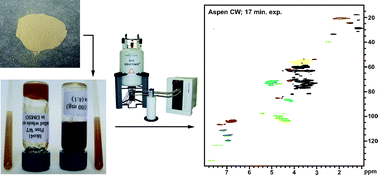Solution-state 2D NMR of ball-milled plant cell wall gels in DMSO-d6/pyridine-d5†
Abstract

* Corresponding authors
a
Department of Biochemistry, and DOE Great Lakes BioEnergy Research Center, University of Wisconsin, Madison, Wisconsin 53706, USA
E-mail:
hoonkim@wisc.edu
Fax: +1 (608) 265-2904
Tel: +1 (608) 262-1629
b
Department of Biochemistry, DOE Great Lakes BioEnergy Research Center, and Department of Biological Systems Engineering, University of Wisconsin, Madison, Wisconsin 53706, USA
E-mail:
jralph@wisc.edu
Fax: +1 (608) 265-2904
Tel: +1 (608) 890-2429

 Please wait while we load your content...
Something went wrong. Try again?
Please wait while we load your content...
Something went wrong. Try again?
H. Kim and J. Ralph, Org. Biomol. Chem., 2010, 8, 576 DOI: 10.1039/B916070A
To request permission to reproduce material from this article, please go to the Copyright Clearance Center request page.
If you are an author contributing to an RSC publication, you do not need to request permission provided correct acknowledgement is given.
If you are the author of this article, you do not need to request permission to reproduce figures and diagrams provided correct acknowledgement is given. If you want to reproduce the whole article in a third-party publication (excluding your thesis/dissertation for which permission is not required) please go to the Copyright Clearance Center request page.
Read more about how to correctly acknowledge RSC content.
 Fetching data from CrossRef.
Fetching data from CrossRef.
This may take some time to load.
Loading related content
